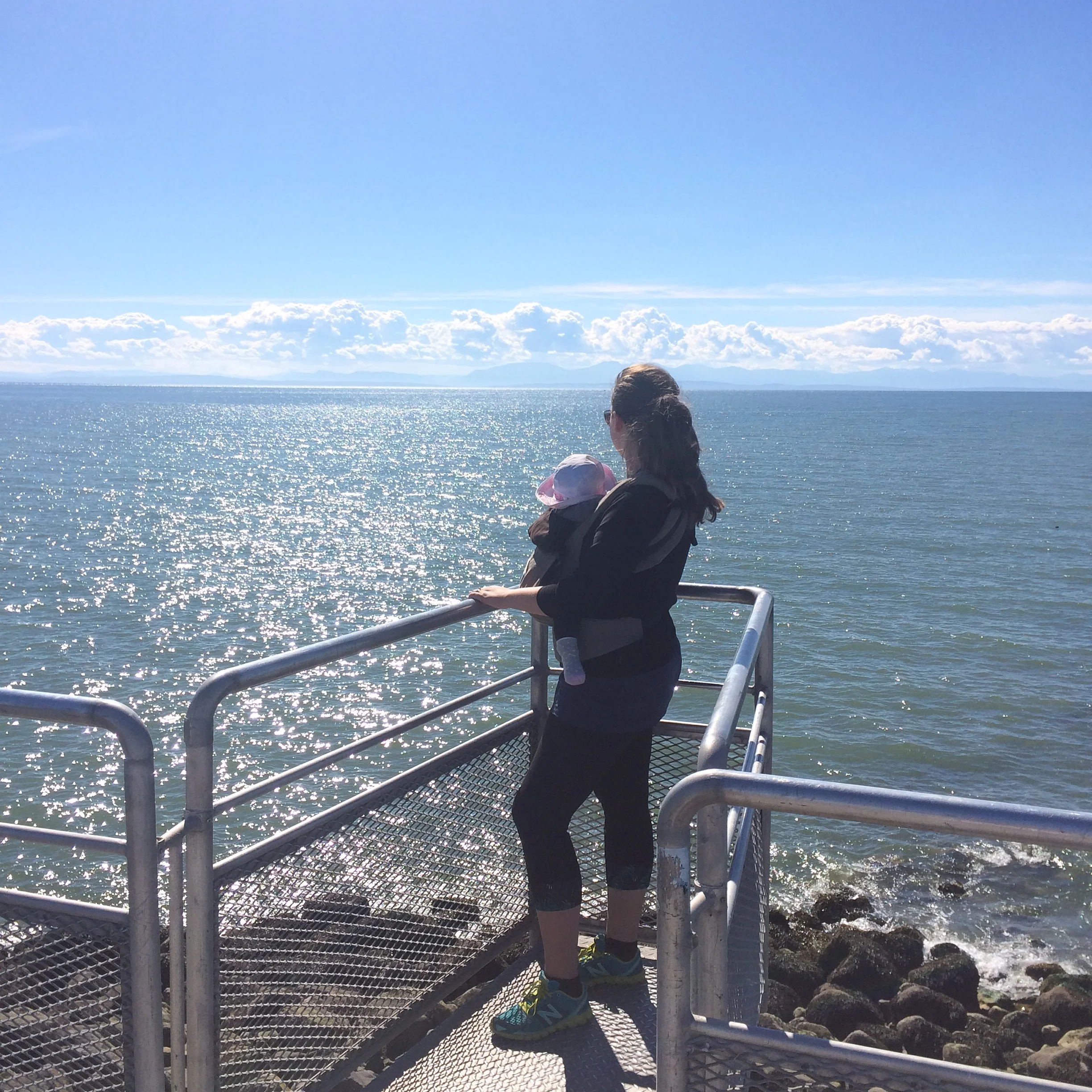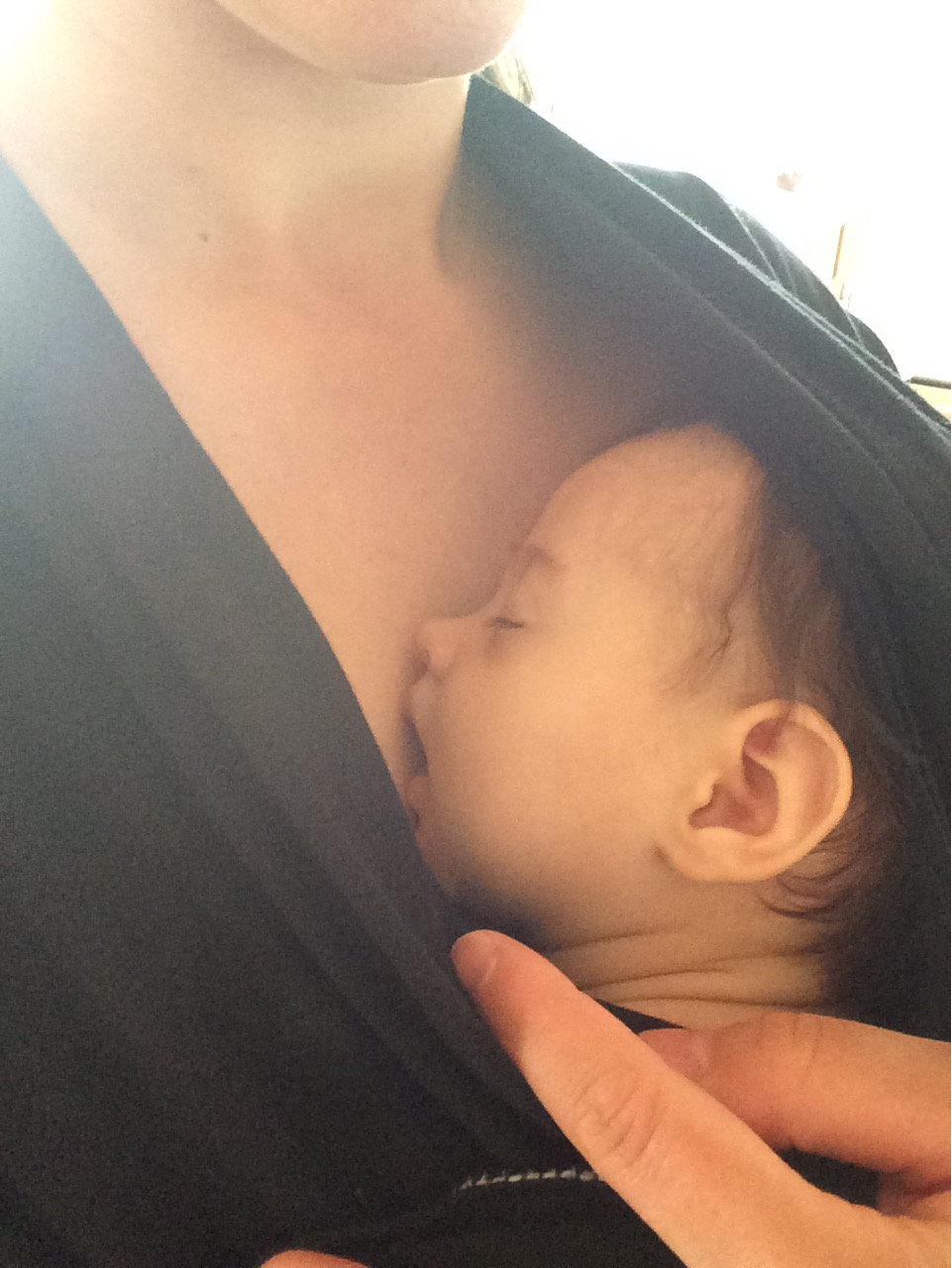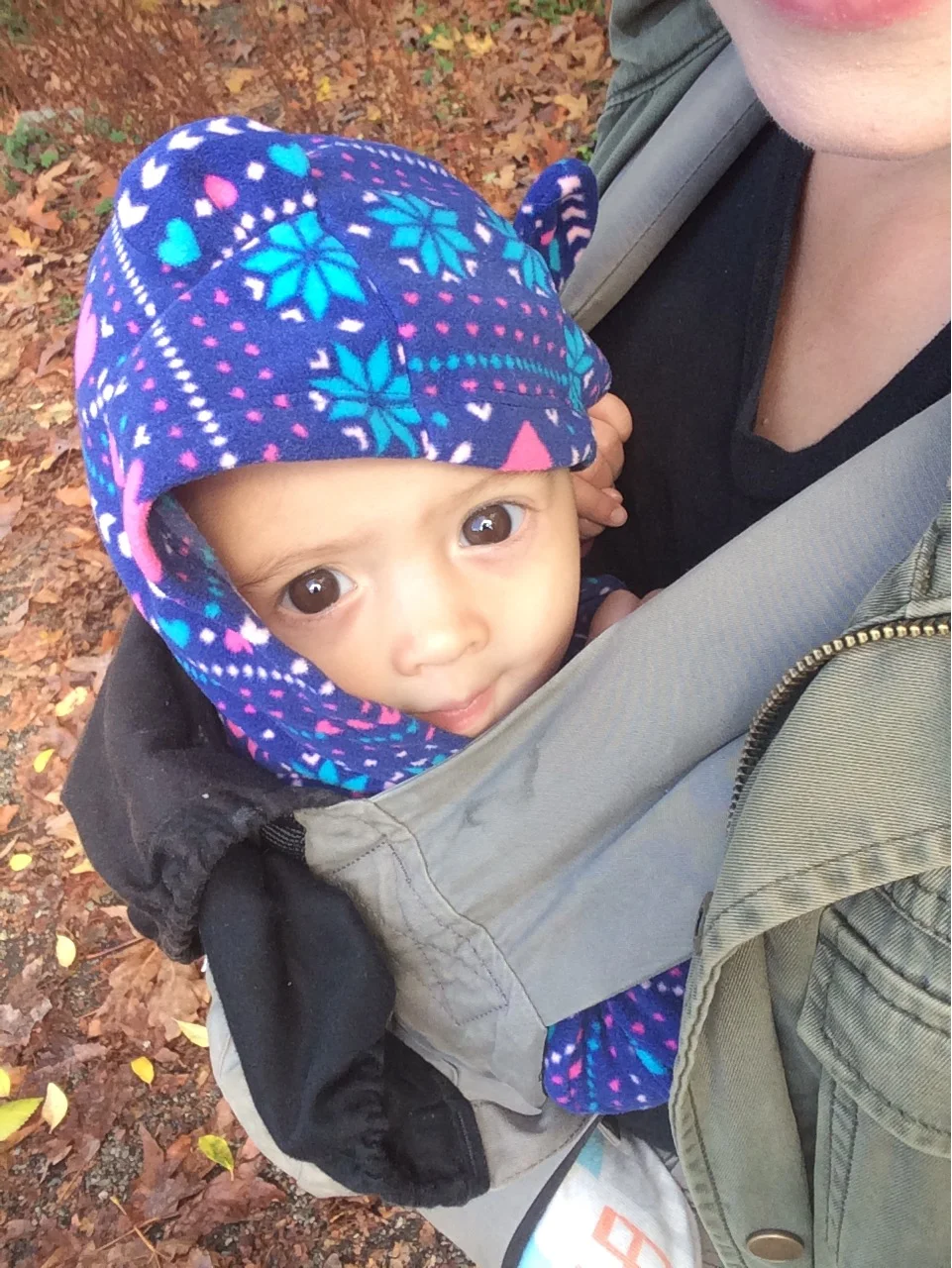Babywearing has been a saving grace for me. My younger daughter, Kaya, is very different than her older sister, Sara, when it comes to sleep. Sara was a textbook baby and she took to sleeping and napping quite easily. Kaya's sleep habits have been very different. For her first six months of life I couldn't put her down on her own to sleep. Ok, I am exaggerating, I was able to put her down to sleep five times. I know this because I documented each time with a photo.
Not only could I comfort my young infant and get her to nap for longer periods, but I could get stuff done around the house and get outdoors with my dogs. I touch on this advantage in last week's post, where I discuss why I am still wearing my one year old.
Babywearing is about more than convenience.
It turns out that long naps for Kaya and hands-free time for me aren't the only benefits that we received during those first six months of daily, almost constant, babywearing.
Below are some of the proven benefits that come from this ancient act.
• Happier babies: Babies who are held more, cry less.
• Communication: With your baby up close, you are able to read their cues and stay better attuned to their needs.
• Promotes physical development: Moving with mom (or other caregiver) and hearing her heartbeat and feeling her breath helps baby regulate their own physical responses. The movement exercises their vestibular system, developing their sense of balance. I noticed first hand that babywearing has similar benefits as tummy time, in terms of head control and core strengthening.
The affect of touch and being held has been shown to help premature babies gain weight faster and be healthier overall than those who are not.
• Trust, connection, and bonding: When baby's needs are being met consistently, their trust in their caregiver is strengthened and in turn, the caregiver's confidence grows. This mutual trust enhances the connection and bond between caregiver and baby. Babywearing can be tremendously beneficial for a mother who is at risk for or suffering from postpartum depression.
• Smarter babies: The combination of the benefits I listed above all contribute to the development of the baby's brain and cognitive function. A baby learns so much just by observing their mother and father (or caregiver) in action.
"Environmental experiences stimulate nerves to branch out and connect with other nerves, which helps the brain grow and develop. The benefits of babywearing are that it helps the infant’s developing brain make the right connections." - Excerpt from AskDrSears.com
Another benefit of babywearing I have witnessed, is the fostering of independence.
Now this one may seem counter-intuitive, however individuals who have their needs consistently met as infants grow up to be more independent as toddlers and children.
Kaya has grown into a very secure and confident toddler. She doesn't take long to warm up to new faces and when my mom comes over to babysit there is hardly ever a fuss. Kaya waves and smiles as I blow kisses goodbye and head out the door. I have no doubt that the practice of babywearing, along with our other parenting methods, has had a positive impact on Kaya's sense of security and trust.
I still have more to say on babywearing, what carriers I have used, and places I have carried my babies. This post is the second installment of my ongoing series, Babywearing Diaries. In the third part of this series I will be exploring the history of babywearing.
Keep in mind, I am aware that babywearing isn’t for everyone. It can be physically draining and difficult on the body, especially early on in the postpartum period. I don’t want to add on any unnecessary guilt if you have no desire or physical ability to wear your baby! If you are looking for an alternative way to gain some of the benefits of babywearing, such as temperature and breathing regulation, I would suggest incorporating some skin to skin time into your routine. This simple way of connecting with your baby can be done by both the mother and father/partner.
Sources:
Hunziker UA, Garr RG. (1986) Increased carrying reduces infant crying: A random-ized controlled trial. Pediatrics 77:641-648
“Current knowledge about skin-to-skin (kangaroo) care for pre-term infants”. J Perinatol. 1991 Sep;11(3):216-26.
Pelaez-Nogueras M, Field TM, Hossain Z, Pickens J. (1996). Depressed mothers’ touching increases infants’ positive affect and attention in still-face interactions. Child Development, 67, 1780-92.
Tessier R, M Cristo, S Velez, M Giron, JG Ruiz-Palaez, Y Charpak and N Charpak. (1998) Kangaroo mother care and the bonding hypothesis. Pediatrics 102:e17
https://www.sciencedaily.com/releases/2013/01/130107110538.html
http://www.drmomma.org/2012/09/the-dangers-of-crying-it-out.html





